Search Advertising Strategy: How to Build Profitable Campaigns That Maximize ROI
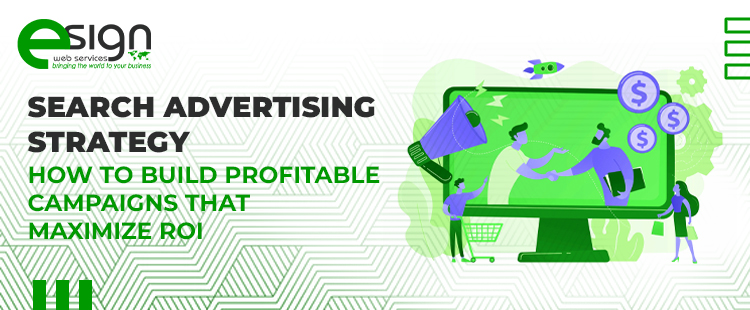
Key Takeaways
- A data-driven search advertising strategy transforms clicks into measurable growth.
- Always set ROI-driven goals and KPIs before spending a dollar.
- Balance manual control with automated bidding for precision and efficiency.
- Focus on commercial-intent keywords and maintain a strong negative keyword list.
- Compelling ad copy and optimized landing pages drive higher conversions.
- Continuous testing and tracking ensure your PPC advertising campaign evolves with data.
- Avoid common PPC pitfalls like weak tracking, poor targeting, or over-automation.
- Partnering with experts like eSign Web Services helps turn ad spend into long-term profitability
Most businesses jump into paid search advertising with enthusiasm but end up disappointed when the ROI doesn’t add up. Studies reveal that more than 65% of ad spend is wasted due to poor targeting, irrelevant clicks, and weak tracking. Imagine pouring thousands into clicks that never had the intent to buy; it’s like fueling a car with holes in the tank.
The truth is, PPC isn’t broken. What’s broken is how many advertisers approach it. Many rush into campaigns with no clear goals, vague messaging, and little understanding of audience intent. Others rely too heavily on automation without oversight, or they ignore critical factors like negative keywords and landing page optimization. Without a structured search advertising strategy, campaigns bleed money and opportunities.
The difference between failure and profitability comes down to clarity, data, and execution. Done right, a PPC advertising campaign becomes a predictable growth engine. This blog will show you how to transform a basic PPC advertising campaign into a high-performing engine that maximizes ROI. From smarter keyword research to google PPC advertising insights, you’ll learn proven tactics to make every click count.
Step 1: Define Goals That Drive ROI
Launching a PPC advertising campaign without clear goals is like sailing without a compass—you move, but never reach profit. Begin by identifying outcomes that actually matter. Do you want to increase online sales by 20% in three months? Capture 500 new leads at $25 each? Raise your ROAS to 4:1? These measurable goals anchor your search advertising strategy. Next, define KPIs like CTR, CPA, and overall ROI—these metrics keep campaigns accountable. Budgeting is equally critical. A baseline of $1,000–$3,000 per month provides small businesses with sufficient runway to test and optimize.
Pro Tip:
- Always tie every dollar spent to a measurable result.
- Use real-time dashboards to track ROI daily or weekly.
- Review your goals quarterly and adjust based on performance trends.
- If your Google advertising strategy doesn’t connect spend to returns, you’re not investing—you’re guessing
Step 2: Know Your Audience Like a Marketer-Detective
Behind every keyword is a human searching with intent. Great search advertising campaigns focus on who these people are and what drives them. Begin by researching demographics, including age, location, and device usage. Then go deeper—what motivates them, what frustrates them, and what objections keep them from buying? Map out the buyer’s journey: awareness (e.g., “best project management tools”), consideration (e.g., “project management software pricing”), and decision (e.g., “buy CRM app”). Each stage demands a tailored ad message. When you understand intent, you can craft ads that speak directly to their needs rather than generic promises.
Quick Win: Dive into analytics and CRM reports to uncover the actual search terms customers used before converting. Use these insights to refine your PPC advertising Google AdWords campaigns. When your ads match both intent and emotion, you’re no longer just attracting clicks—you’re winning trust. And trust leads to conversions.
Step 3: Dominate Keywords with Precision
Keywords are the currency of PPC search advertising, but not all clicks are created equal. Successful campaigns focus on commercial intent—terms like “buy Nike sneakers online” or “CRM software free trial” signal buyers ready to act. Use keyword tools to balance high-volume search terms with long-tail gems that cost less but often convert better. Structure matters too: tightly themed ad groups improve ad relevance and Quality Score. Consider SKAGs (single keyword ad groups) for your most valuable terms to maintain laser focus.
But the real secret weapon? Negative keywords. By blocking terms like “cheap” or “free,” you instantly protect your budget from junk clicks.
Many businesses waste thousands simply because they never built a negative list. Combine competitor research with smart keyword grouping, and your Google search ads strategy will outmaneuver rivals while paying less per click.
Interactive Question For You:  What’s one keyword mistake you’ve learned the hard way that changed how you manage your campaigns? Share your experience in the comments; your insight might help another marketer save thousands!
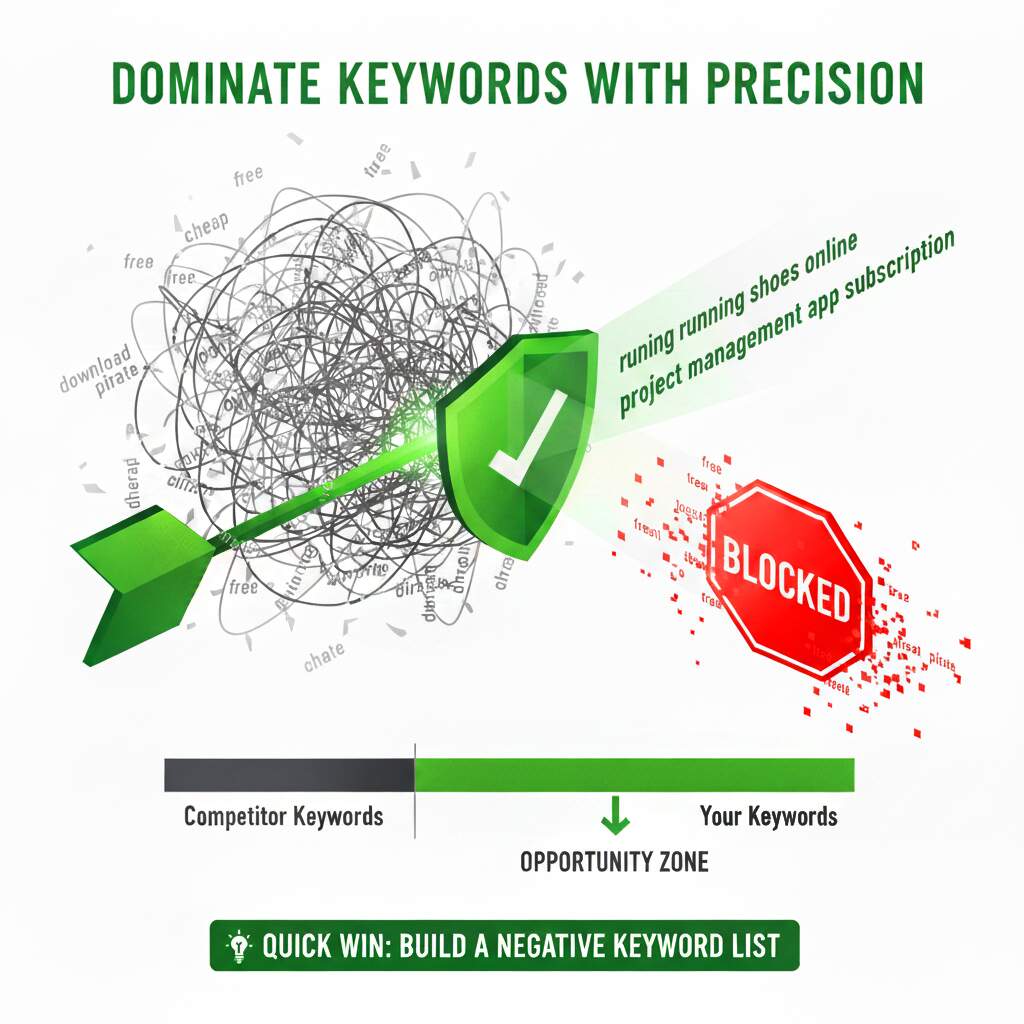
Step 4: Create Ads That People Can’t Ignore
Even the most effective keyword list fails without compelling ad copy. The goal of Google paid search advertising isn’t just to show up—it’s to win the click. Headlines are your hook, so make them bold, emotional, and benefit-driven. For example, instead of “Affordable Hosting Plans,” use “Launch Your Website Today—Hosting from $5.” Descriptions seal the deal: highlight unique selling points, address objections, and conclude with strong CTAs, such as “Get a Free Demo” or “Shop Now.” Extensions—such as sitelinks, callouts, and snippets—boost visibility and credibility. Please don’t leave them unused; ads with extensions consistently score higher CTRs.
Strong ad copy also builds trust and sets the tone for the landing page experience. When your ads feel relevant and helpful, users are more likely to click and continue their journey. Remember, every line of copy should focus on solving the searcher’s problem, not just selling a product.
✨ Pro Tip: Test multiple ad versions. A single wording shift can change CTR by 20% or more. Your PPC advertising campaign doesn’t just need impressions—it needs persuasion. Great ads feel like answers to user questions, not just promotions.
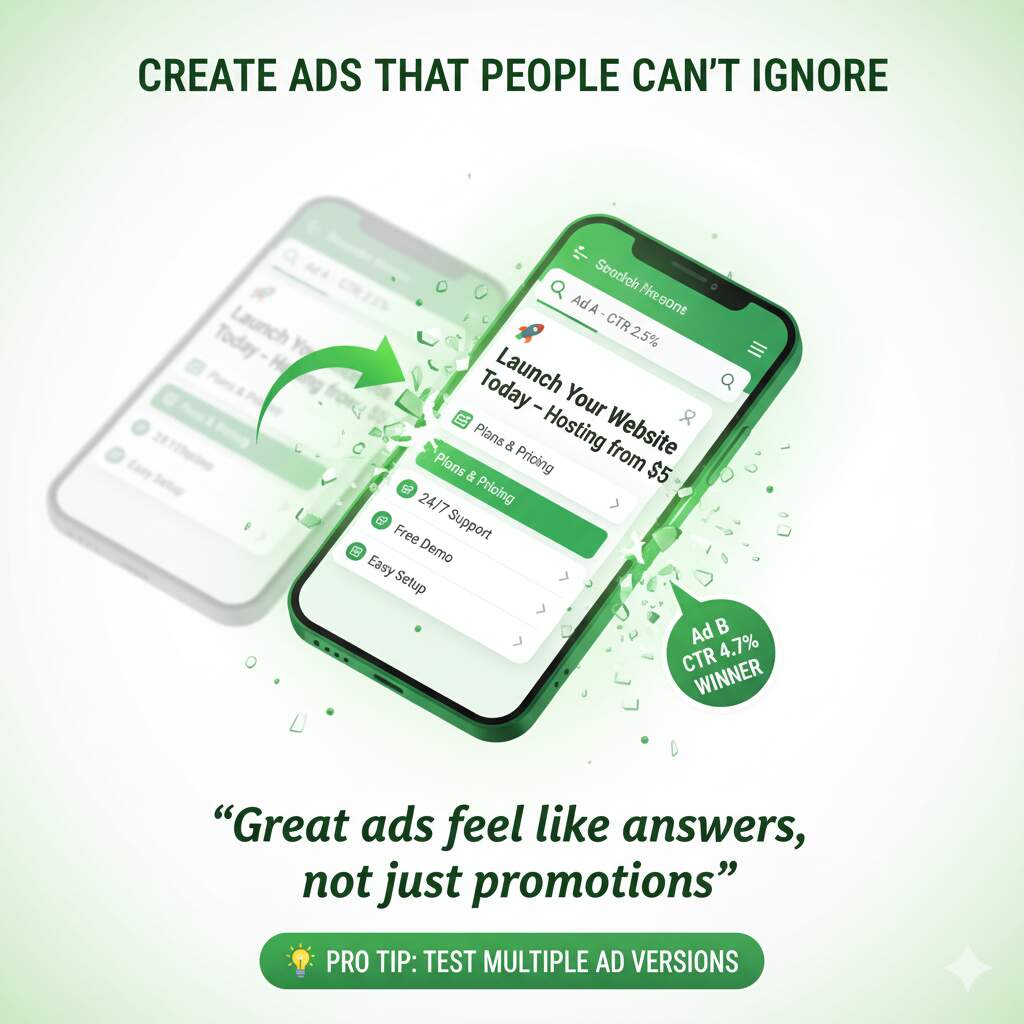
Step 5: Landing Pages That Convert, Not Confuse
Clicks don’t equal customers—conversion happens only on the landing page. Yet too many search advertising strategies fail because they dump visitors onto generic homepages that don’t deliver on the ad’s promise. Every ad should lead to a custom landing page with consistent messaging. If your ad says “50% Off Trial,” your page must highlight the same offer instantly. Keep the design clean: a clear hierarchy, bold CTAs above the fold, and minimal distractions. Speed is also critical—Google reports even a 1-second delay can slash conversions by 7%. A/B test headlines, visuals, and forms regularly, as small adjustments often produce big lifts in performance.
Common mistake: ignoring mobile users. With most traffic coming from phones, a clunky mobile experience instantly kills ROI.
✨ Pro Tip: Use heatmaps and session recordings to learn how visitors behave. Aligning ads with pages makes your Google advertising strategy a true conversion engine.
 Step 6: Bid Smarter, Spend Wiser
Step 6: Bid Smarter, Spend Wiser
In PPC advertising Google AdWords, higher bids don’t guarantee success. The smartest advertisers align bidding strategies with campaign goals. Manual bidding gives full control but demands time and expertise, while automated bidding uses AI to optimize performance in real time. Understanding when to use which method can transform your ROI.
| Bidding Strategy | How It Works | Best Used For | Pro Tip |
| Manual Bidding | You set your own CPC for each keyword. | When you want maximum control and have enough data. | Ideal for high-value keywords or niche campaigns. |
| Target CPA | Google adjusts bids to hit a set cost per acquisition. | Lead generation or e-commerce with defined CPA goals. | Requires stable conversion data for accuracy. |
| Target ROAS | Bids aim to achieve a specific return on ad spend. | When profit margins vary across products. | Best for campaigns tracking purchase values. |
| Maximize Conversions | Uses full budget to get as many conversions as possible. | New campaigns needing volume and data fast. | Great starting point for learning performance trends. |
Mastering bidding in PPC advertising Google AdWords is about balance, not budget. Combine data-driven automation with strategic human control to achieve consistency and flexibility. When bids align with clear objectives, every dollar works harder, driving stronger ROI and ensuring your paid search advertising strategy remains sustainable and scalable.
Step 7: Analyze, Optimize, Repeat
The biggest myth in paid search advertising is that campaigns can run on autopilot. Winning advertisers know optimization never ends. Start with strong tracking—install conversion codes, integrate Google Analytics, and tie campaigns to measurable business outcomes. Weekly, review search term reports to refine keyword lists and negatives. Monthly, test new ad copy and fresh landing page designs. Monitor Quality Score relentlessly—higher scores cut CPC while boosting visibility.
Data tells the real story, but only if you act on it. Trends shift, competitors adjust, and user behavior evolves—your campaign must adapt in real time. Treat every data point as feedback for smarter decisions.
✨ Pro Tip: Document every experiment. Over time, you’ll build a library of what works and what doesn’t. The result? Predictable growth. A PPC advertising campaign isn’t a one-time project—it’s a living engine. Evolve it continuously, and your ROI compounds month after month.
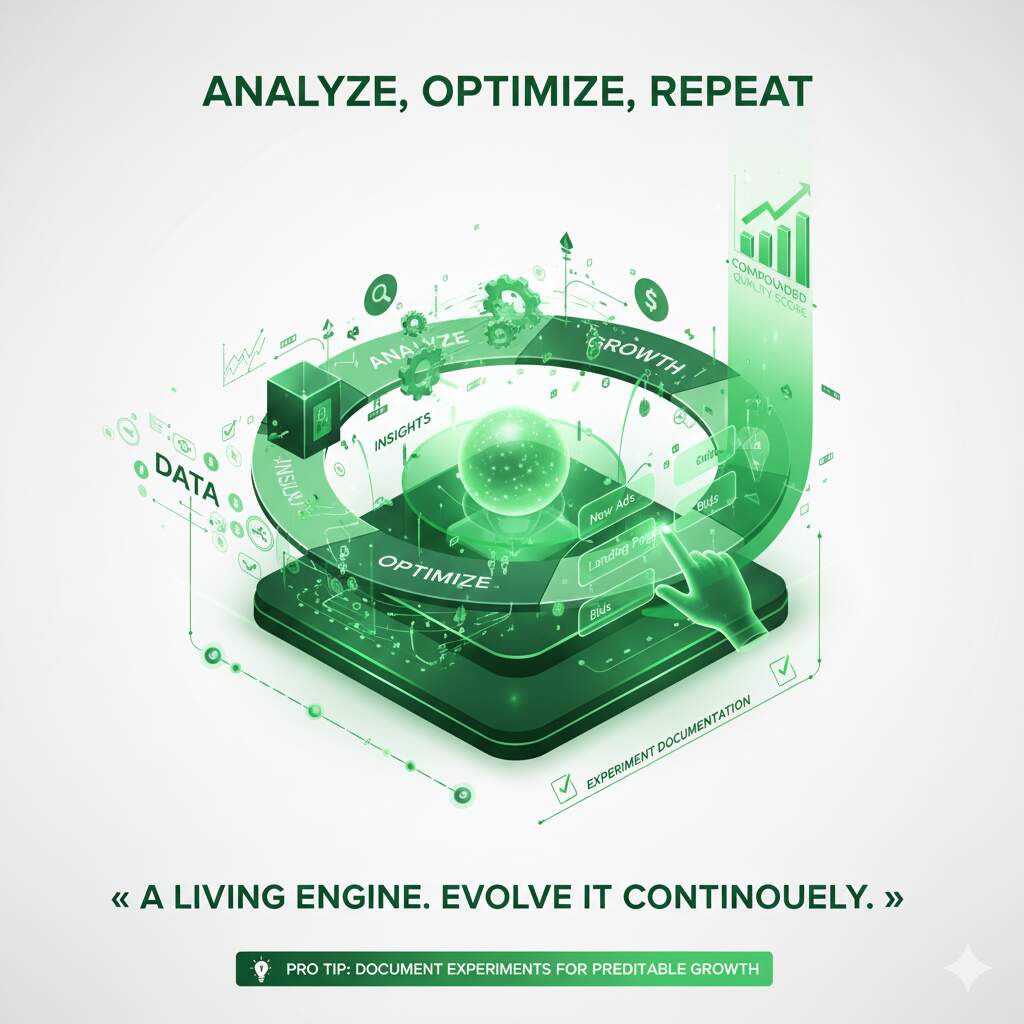
Mistakes That Kill ROI
Even the most advanced PPC strategies can collapse under simple errors. Small missteps compound fast, turning profitable campaigns into costly lessons. Here’s what silently kills ROI—and how to prevent it.
- No negative keywords (wasted clicks).
- Sending traffic to generic homepages (poor conversions).
- Ignoring Quality Score (paying more for worse results).
- Over-relying on automation (AI can’t replace human oversight).
These aren’t minor slip-ups—they’re silent profit leaks. Imagine spending $10,000 and realizing half went to irrelevant clicks! Smart advertisers run regular audits to catch these early. The best approach is proactive prevention—review search terms weekly, refresh ad creatives, and audit account structures quarterly.
Regularly analyze conversion paths to ensure clicks translate into meaningful outcomes. The most profitable Google search ads strategy doesn’t just focus on scaling up; it focuses on protecting what’s already working. Remember—saving wasted dollars is just as valuable as earning new ones.
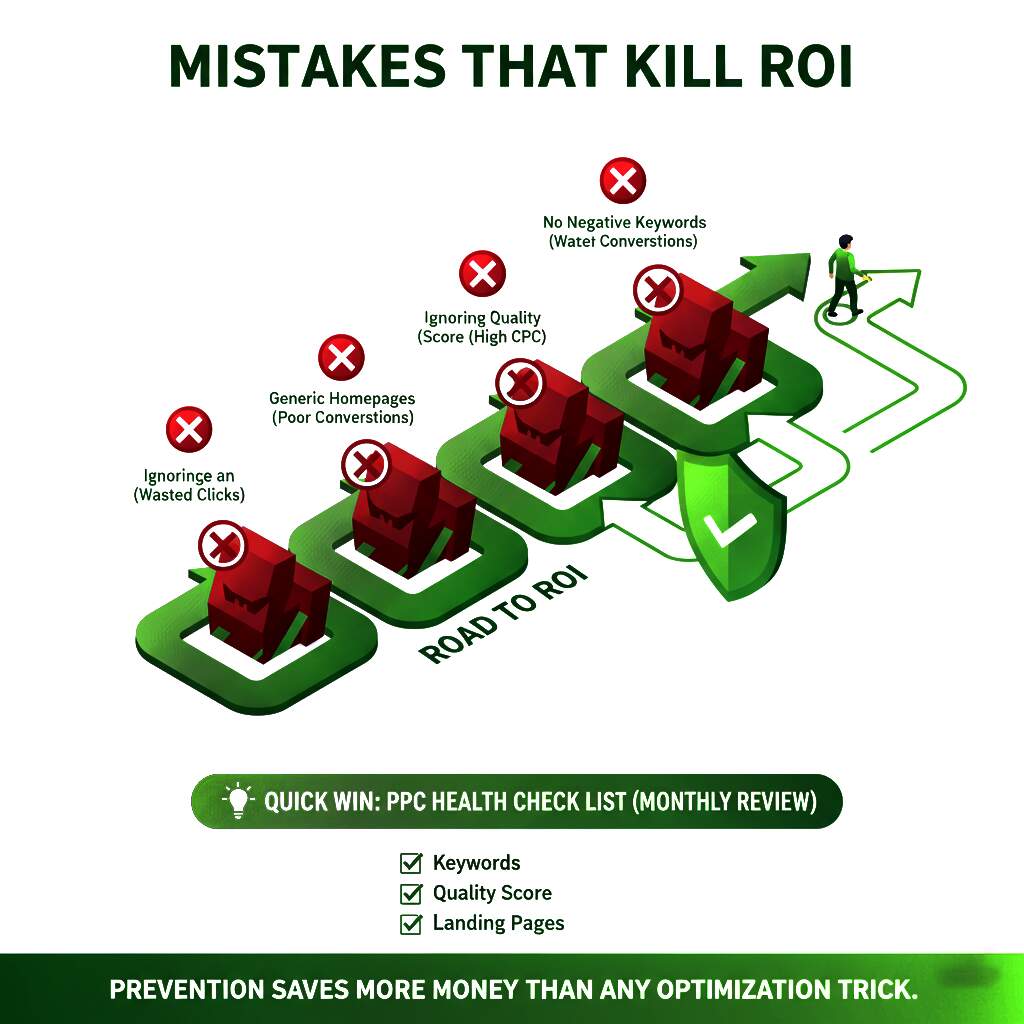
Advanced ROI-Boosting Tactics
Once the fundamentals are strong, advanced tactics unlock even greater ROI. Start with remarketing—targeting past visitors who didn’t convert. These warm leads often deliver higher conversion rates at lower costs. Next, use customer match lists to upsell to existing clients or build lookalike audiences for expansion. In-market audiences are another effective tool, enabling you to reach people actively considering your product type. Dynamic Search Ads can auto-match your content to queries, capturing long-tail opportunities. For local businesses, location and call extensions drive offline foot traffic. And don’t ignore AI-powered bidding—it can react faster to auction signals than humans.
✨ Pro Tip: Strike a balance between automation and strategy. Let Google optimize bids while you control messaging, offers, and targeting. Advanced PPC search advertising is not about complexity—it’s about precision. Done right, it pushes ROI beyond the competition.
Culmination: From Clicks to Customers
In today’s digital battleground, paid search advertising isn’t just about clicks—it’s about conquest. Every click is an opportunity, every impression a potential lead, and every optimized ad a step toward market dominance. A winning search advertising strategy doesn’t chase traffic; it builds predictable growth through precision, testing, and constant refinement. Define your goals. Know your audience. Master keywords. Craft magnetic ads. Let data lead the way.
The brands that treat PPC as a living ecosystem—not a one-time setup—are the ones rewriting success stories.
Dream Big. Advertise Smarter. Grow Without Limits.
At eSign Web Services, we don’t just run ads—we engineer growth. Our PPC advertising campaigns turn wasted spend into measurable profit, transforming ordinary accounts into unstoppable ROI engines. Ready to make your marketing money work smarter? Let’s turn your Google PPC advertising clicks into customers, conversions, and brand dominance.
Frequently Asked Questions
Q: How much budget should I allocate to start a search advertising campaign?
A: Start with a budget that allows for meaningful data collection, typically $1,000-$3,000 per month for small businesses. This amount should provide enough clicks and conversions to make informed optimization decisions while managing risk during the initial learning phase.
Q: How long does it take to see results from search advertising campaigns?
A: Initial results can be seen within days of campaign launch, but meaningful optimization typically requires 2-4 weeks of data collection. Achieving optimal performance usually takes 2-3 months of consistent testing and refinement.
Q: What is considered a good return on ad spend (ROAS) for search campaigns?
A: A good ROAS varies by industry and business model, but generally ranges from 3:1 to 5:1 for most businesses. This means generating $3-$5 in revenue for every $1 spent on advertising, though some industries may require higher ratios due to lower profit margins.
Q: Should I focus on broad match or exact match keywords?
A: Use a combination of match types based on your campaign goals and budget. Start with phrase and exact match keywords for better control, then gradually introduce broad match modifier or broad match keywords as you build negative keyword lists and gain more data.
Q: How often should I review and optimize my search campaigns?
A: Review campaign performance weekly for basic maintenance tasks like adding negative keywords and adjusting bids. Conduct more comprehensive optimization monthly, including ad copy testing, landing page improvements, and strategic adjustments based on accumulated data.
Q: What’s the biggest mistake new advertisers make in PPC?
A: The most common error is running campaigns without clear conversion tracking. Without data on leads, calls, or purchases, you can’t measure ROI. Always install tracking pixels or Google conversion tags before launching, ensuring that success is measurable from day one.
Q: Can small businesses compete with big brands in paid search advertising?
A: Absolutely. Small businesses can win by focusing on niche keywords, localized campaigns, and high-quality ad relevance. Big brands often overspend on volume, while smaller advertisers can leverage precision targeting and better customer intent alignment to outperform larger competitors.
Q: How important are landing pages for PPC success?
A: Crucial. A well-optimized landing page can double conversion rates without changing the ad spend. Align page headlines with ad copy, include a single clear CTA, and ensure fast mobile load times. Google rewards this consistency with a higher Quality Score and lower CPC.


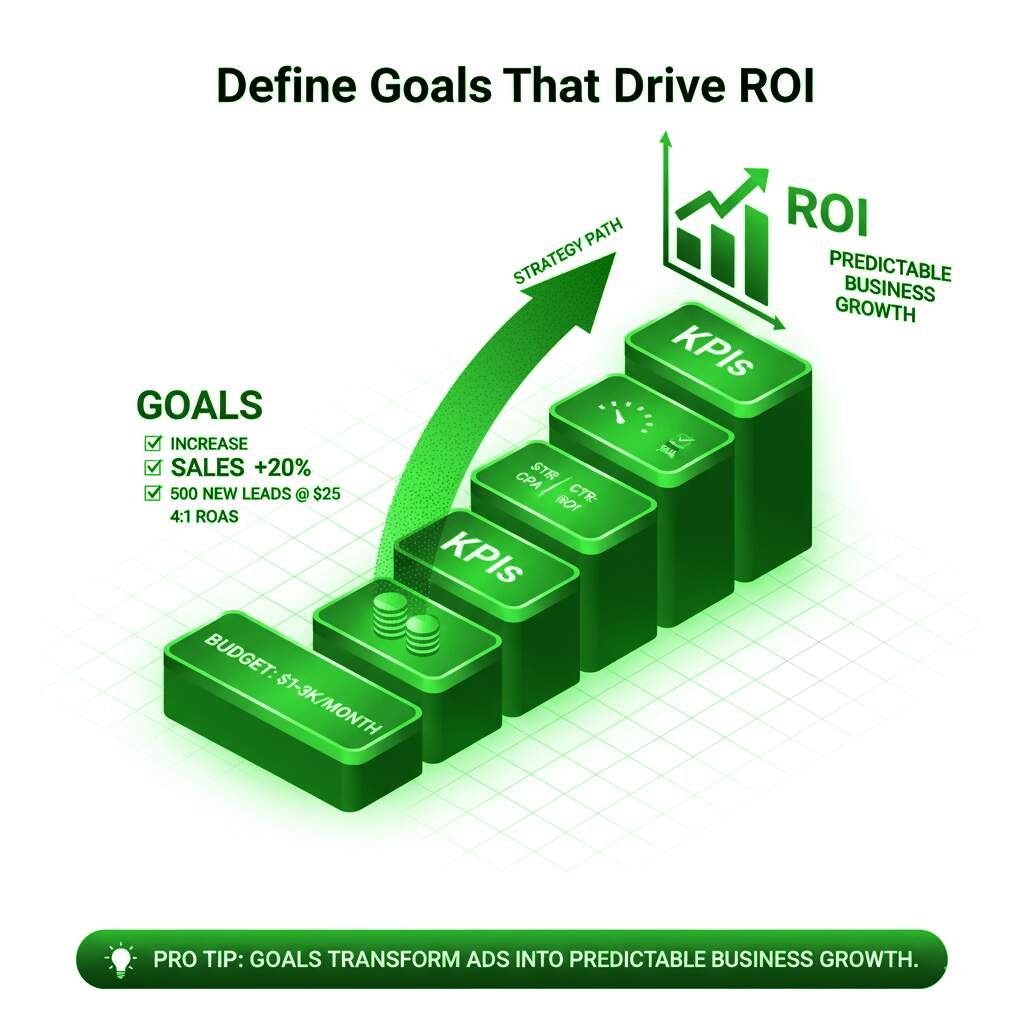
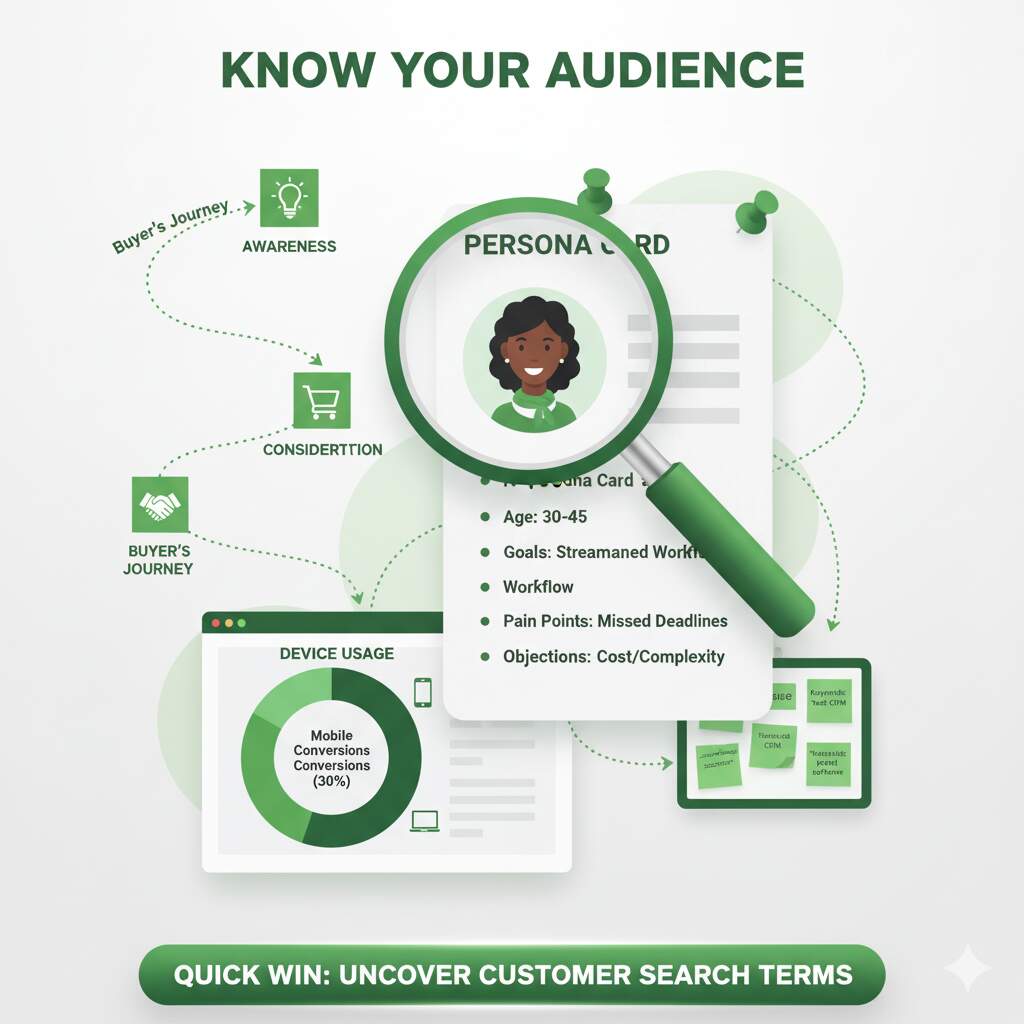
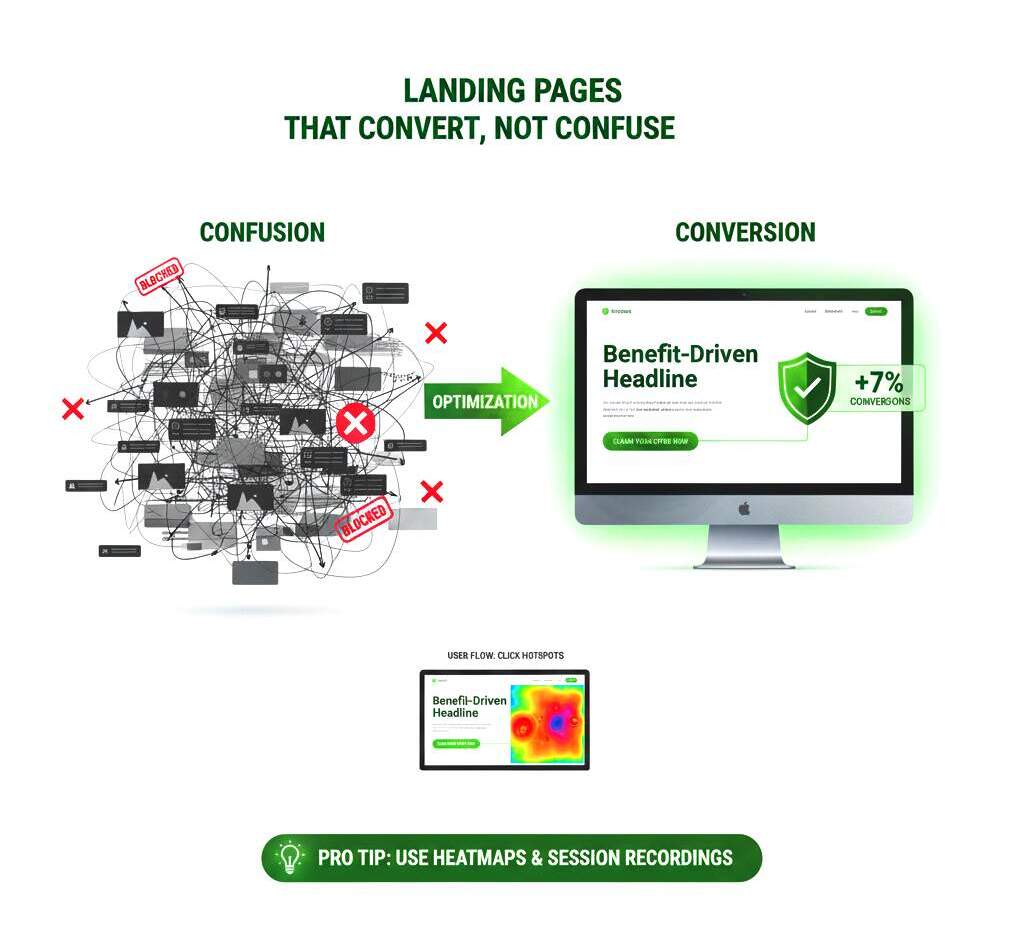 Step 6: Bid Smarter, Spend Wiser
Step 6: Bid Smarter, Spend Wiser